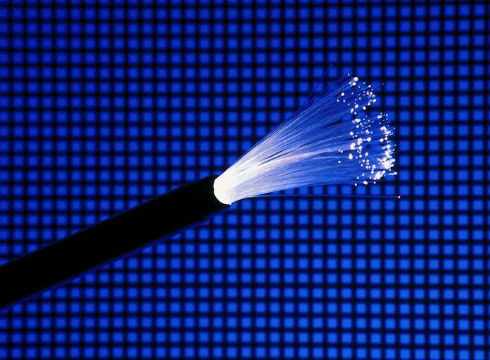

BT has successfully tested a long-distance 800Gbps “super-channel” on its core fibre network, capable of sending seven high definition DVDs in a single second.
Laboratory tests have reached 800Gbps before, but this is the first time it’s gone long distance, covering the 410km between BT’s Adastral Park research centre, near Ipswich in Suffolk, and the BT Tower in London, using equipment from network kit vendor Ciena. The surprising thing is that the test was successful on fibre which was previously not considered good enough to carry 10Gbps.
The trials, which took place in March 2013, included the transmission of 100, 200, and 400Gbps, as well as the 800G super-channel. They used Ciena’s WaveLogic 3 transceivers, and achieved their results on an existing fibre in BT’s core.
To make matters harder for themselves, the experimenters chose a fibre which exhibited poor properties in allowing different polarisations of light to disperse. Its high Polarization Mode Dispersion (PMD) figure had made it unsuitable to even carry 10Gbps using current techniques.
The test used dense wave division multiplexing (DWDM) – a technique which multiplies the streams of data that can be sent over a fibre link by using several different “colours” or wavelengths of light.
A super-channel is a recent advance in DWDM, which combines multiple coherent optical carriers into one unified channel of a higher data rate.
The test is important to BT, because it shows its fibre-optic network, which has been installed over more than a decade, is future-proof. For Ciena, it’s an endorsement of the 6500 Packet-Optical and 4200 Advanced Services platforms used in the test.
The tests also showed 400Gbps of traffic carried alongside adjacent wavelengths on the same fibre, carrying 40Gbps and 100Gbps – the new traffic used the 16QAM (quadrature amplitude modulatopn) which changes the amplitude of the carrier, while the older channels used QPSK (quadrature phase shift keying) which changes the phase of a signal to carry data.
This means BT can smoothly phase in newer signalling methods without having to use extra fibres or replace existing infrastructure – something which BT says will lower costs to customers and reduce its own carbon footprint.
Meanwhile, for parts of the country without fibre, wireless links might be the answer – German academics have set a record of 20Gbps for long distance wireless transmission using 240GHz waves.
What do you know about BT? Find out with our quiz!
Nvidia to partner with TSMC, Foxconn, Wistron, Amkor and SPIL to build $500 billion (£377…
American think tank warns about possible threat to US defence, after China imposes rare earth…
China is reportedly pursuing three alleged US NSA operatives, after cyberattacks on Chinese infrastructure
Chip making giant ASML mirrors other equipment makers, and outlines financial impact of Donald Trump's…
AI is transforming cybersecurity, offering faster defence and smarter attacks. Learn how businesses can harness…
Search engine giant being sued for £5 billion ($6.64 billion) damages over allegations for online…